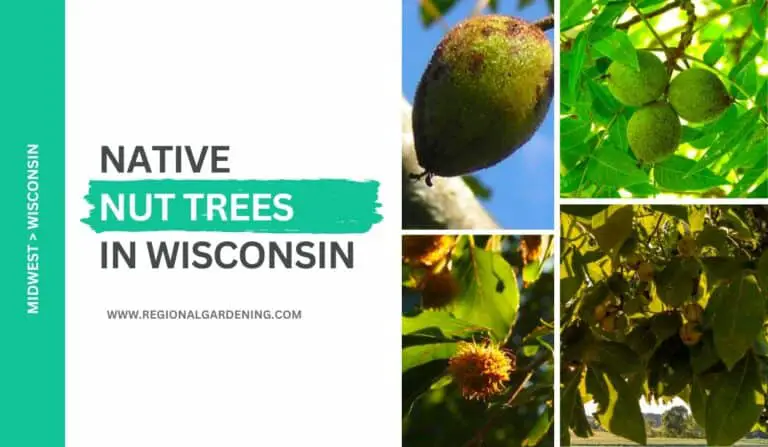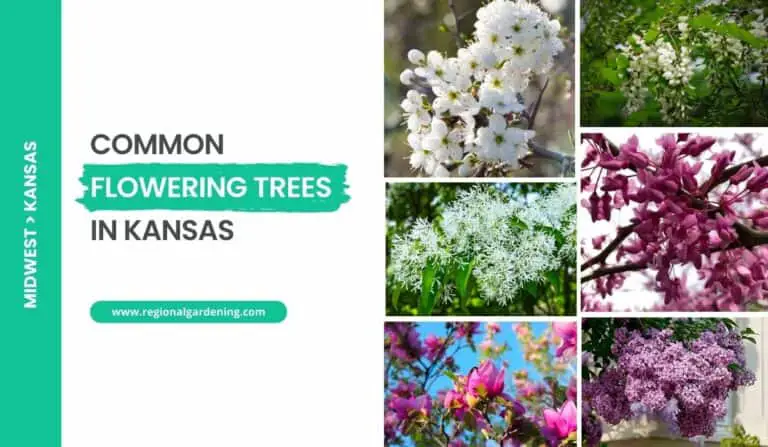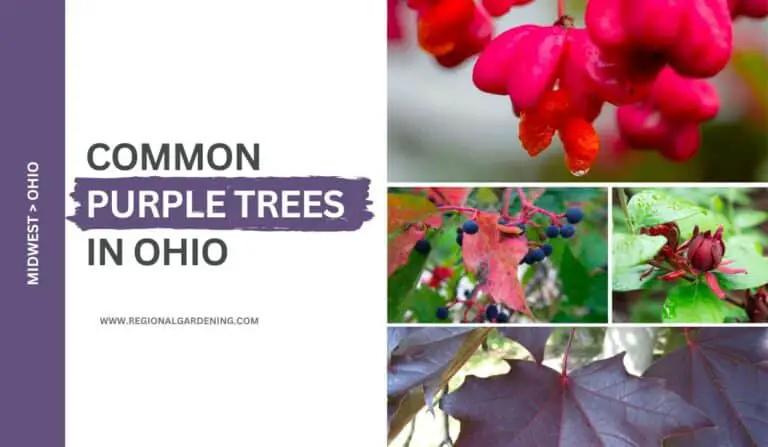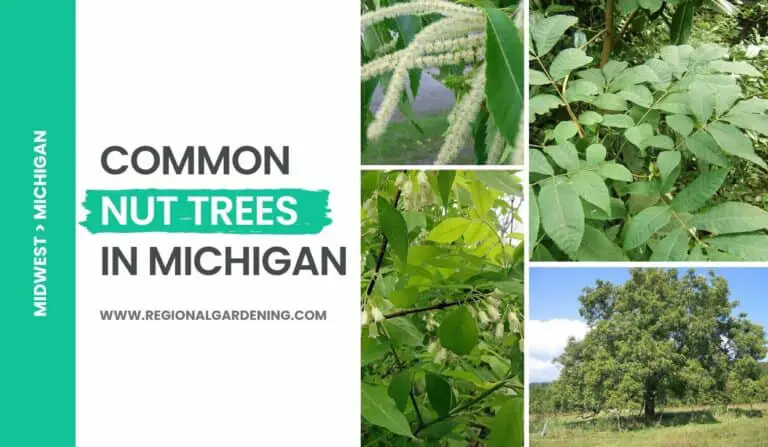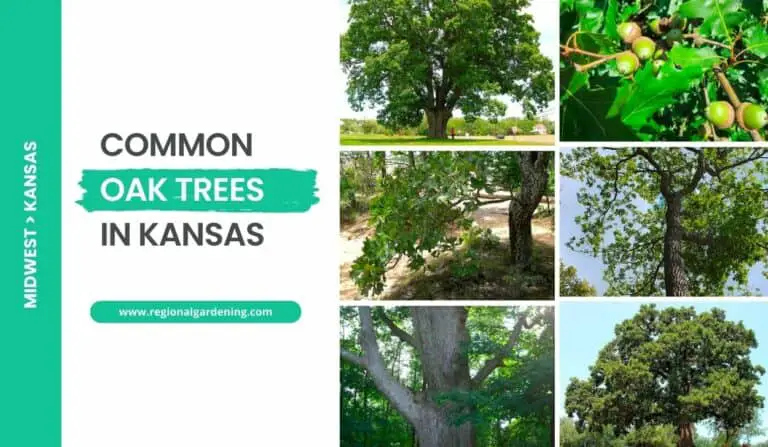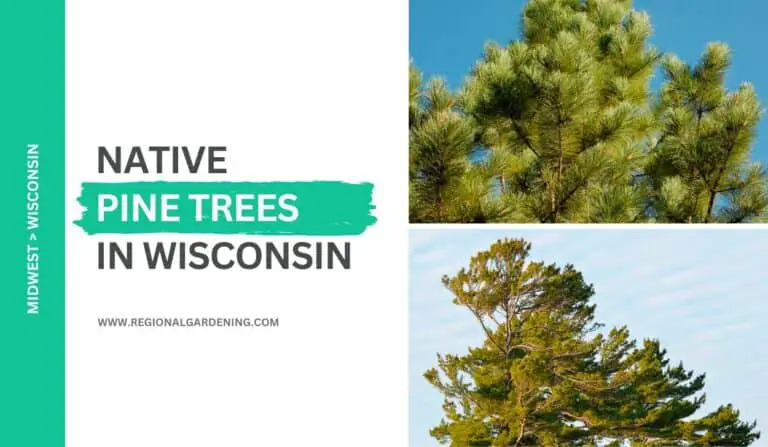3 Native Cherry Trees In Minnesota (Photos, Identification & Care)
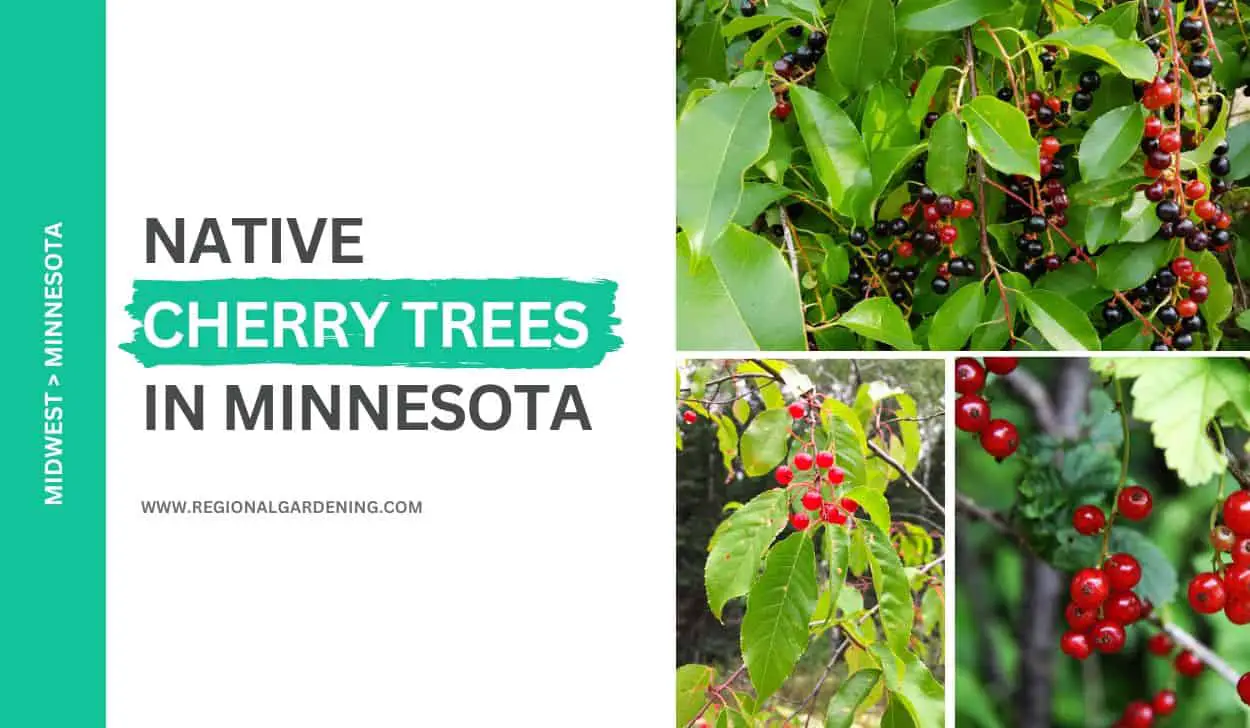
If you’re looking for a sweet and tart addition to your Minnesota garden, native cherry trees may be just what you need. These hardy trees not only produce delicious fruit, but they also provide stunning ornamental value with their delicate blooms and autumn foliage.
In this article, we’ll look at three native cherry trees in Minnesota that are well-suited to the state’s climate and soil conditions. Each tree has high-quality photos and descriptions, including information such as identification, native habitat, and range.
So, let’s get started.
1. Chokecherry
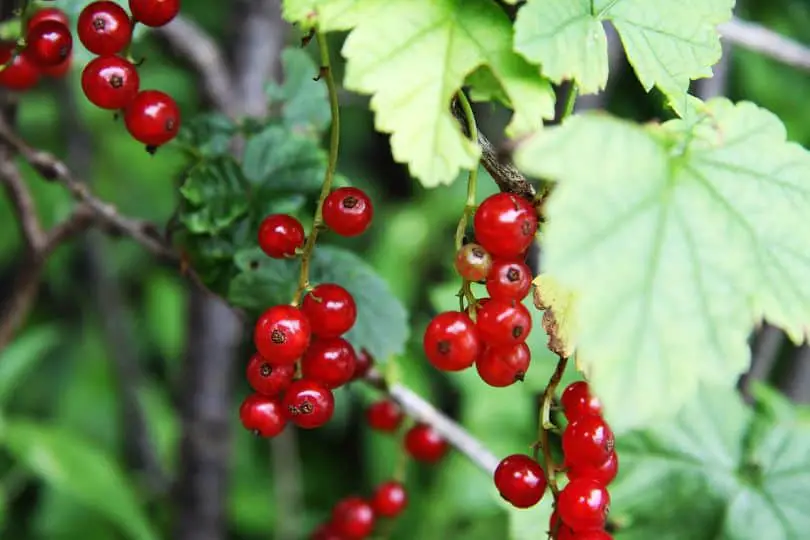
- Common Name: Choke Cherry
- Scientific Name: Prunus virginiana
- Mature Height: 20 to 25ft
- Native/Non-Native: Native
- Flowers/Cones: White flowers appear in dense clusters.
- Uses: Used extensively for ornamental planting.
Choke cherry is a native shrub or small tree that can grow to be 20 to 25 feet tall and 4 to 8 inches in diameter. It is one of the shortest cherry trees in Minnesota along with Pin cherry.
These trees have a straight stems and short branches that are either erect or horizontal. The tree’s bark is thin, grayish-brown, and roughens with age. The inner bark tastes and smells like bitter cherry.
The leaves of the choke cherry are alternating on the twig, broadly oval, abruptly and sharply pointed, fine-toothed, bright green above and paler beneath. The leaves range in length from 2 to 4 inches and width from 1 to 2 inches.
Flowers bloom in thick clusters in May or June, with spherical and white petals. However, choked cherry fruit is crimson, turning nearly black when completely mature. The fruit’s skin is thick, and the flesh is thin and black, making it bitter to the taste.
This tree can be found all across the state along streams, open woodlands, cut-over regions, and brush areas.
Choke cherry wood is dense, hard, and not particularly robust. In Minnesota, it has no commercial value, but it is popular with birds. It is also often used in aesthetic planting.
2. Black Cherry
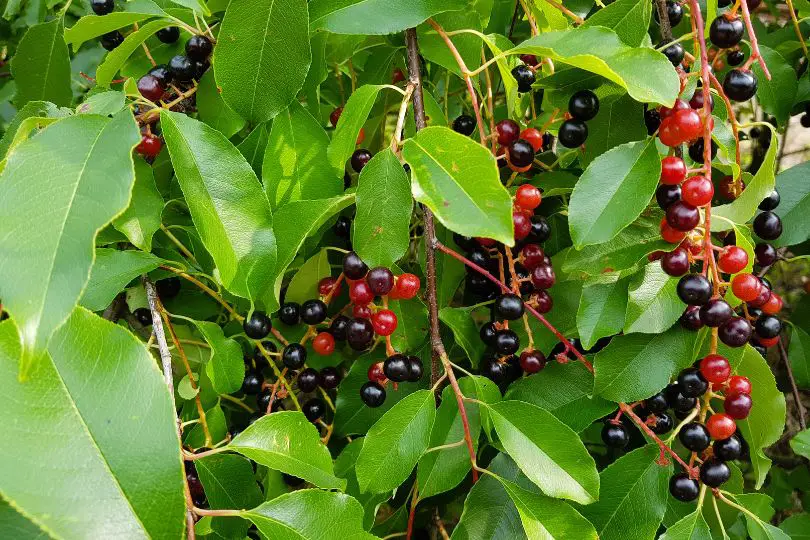
- Common Name: Black Cherry
- Scientific Name: Prunus serotina
- Mature Height: 30 to 70 feet
- Native/Non-Native: Native
- Flowers/Cones: Produces fruit in clusters resembling choke cherries
- Uses: The wood of the tree is commonly used for furniture, tools, and implement handles.
Black Cherry is the tallest of the cherry trees in Minnesota, reaching heights of up to 70 feet and with a diameter of up to 2 feet. This tree has a clean trunk that does not taper significantly while growing in the forest. When grown in the open, it has a short trunk with many branches and an uneven, spreading crown.
The bark of a young Black Cherry tree is smooth and reddish-brown, with narrow white horizontal lines. Its bark has a bitter almond flavor. Older trunks have thin, dark brown bark that is rough and fractured into thick, uneven plates.
This tree has oval-shaped, thick, lustrous green leaves that are paler on the underside and have many fine incurved teeth surrounding them.
The tree produces edible fruit in the form of long, hanging clusters of choke cherries. They ripen in the late summer and have medicinal properties. The fruit is a bleak purplish-black color, about the size of a pea, and slightly astringent.
The Black Cherry tree is native to Minnesota and can be found throughout the hardwood region. The wood of this tree is reddish-brown with yellowish sapwood and has an excellent sheen and color.
The medium-heavy, sturdy, and fine-grained wood is ideal for furniture and interior decoration, as well as tool and implement handles. After black walnut, black cherry is Minnesota’s second most valuable hardwood.
3. Pin Cherry
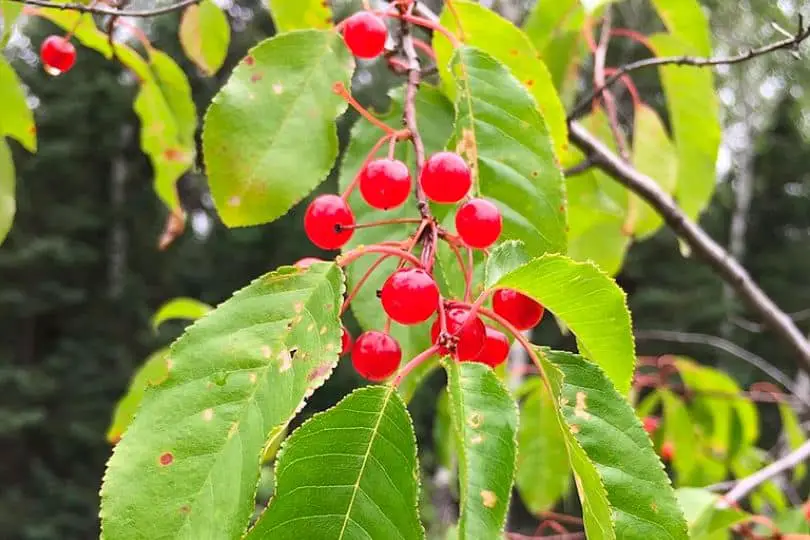
- Common Name: Pin Cherry or Wild Red Cherry
- Scientific Name: Prunus pennsylvanica J
- Mature Height: 30 ft.
- Native/Non-native: Native
- Flowers/Cones: White flowers borne in clusters
- Uses: The flesh of the fruit is used in homes for making jellies.
Pin Cherry, also known as Wild Red Cherry, is a shrub-like tree that can reach medium size. It has reddish-brown bark that splits into papery layers and is characterized by uneven, horizontal bands of orange lenticels.
The leaves of the pin cherry are oblong and pointed, measuring 3 to 4 inches long and 1 inch wide. They have a gleaming green tint and delicately incurved teeth along the edge when fully grown.
The pin cherry produces a bright red fruit that is about 4 inches in diameter. The fruit’s thick skin protects a thin, acidic flesh that surrounds an oblong stone. Fruit ripens in the middle to late summer on long-stocked clusters. The meat is frequently used in the household to make jellies.
Except in the southwestern part of the state, this tree is common in woods throughout the state, and it can be found in cut-over lands, old fields, and along roadsides.
Pin cherry wood is medium-light and soft, brownish with yellowish sapwood, and has no commercial value. The tree is robust and well-suited for house decoration.
It is also favored by more useful songbirds, who use it for nesting and foraging.
Cherry Trees In Minnesota – Frequently Asked Questions (FAQs)
Let us go through some of the most frequently asked questions related to the common and native cherry trees in Minnesota.
Are there any native cherry trees in Minnesota?
The harsh winter climate of Minnesota is unsuitable for most cherry trees in the United States. However, three of the varieties are native to the state, including chokecherry, black cherry, and pin cherry.
Does Minnesota have cherry blossom trees?
There are cherry blossom trees in Minnesota, but they are not native or as common as they are in other parts of the world. The Yoshino cherry, which is native to Japan and is known for its delicate pink and white blossoms that bloom in the spring, is the most common type of cherry blossom tree in Minnesota. These trees can be found in parks and gardens across the state, but especially in the Twin Cities area.
However, because cherry blossom trees require a specific set of growing conditions, they may not thrive in all areas of Minnesota. If you’re interested in adding a cherry blossom tree to your garden, be sure to do your research and choose a variety that is well-suited to the local climate and soil conditions.
Similar Articles
- Native Flowering Trees In Minnesota
- Native Pine Trees In Minnesota
- Native Oak Trees In Minnesota
- Native Maple Trees In Minnesota
- Native Aspen Trees In Minnesota
- Native Ash Trees In Minnesota
- Native Elm Trees In Minnesota
- Native Birch Trees In Minnesota
- Native Hickory Trees In Minnesota
- Native Spruce Trees In Minnesota
- Native Cedar Trees In Minnesota
Sources
The Regional Gardening team makes sure that the information in our articles is accurate by only using sources that are known to be trustworthy. Some of these sources are peer-reviewed journals from government agencies, well-known universities, and scientific research organizations.
- Minnesota’s Native Trees, Department Of Natural Sciences, Minnesota State.
- Forestry Division, Minnesota State.
- Yard And Garden, University Of Minnesota Extension
- Native Plants, University Of Minnesota Extension
- Select Trees And Shrubs For Minnesota Landscapes, University Of Minnesota Extension
- Trees and shrubs for pollinators, University Of Minnesota Extension
- Department Of Agriculture, Minnesota State.


